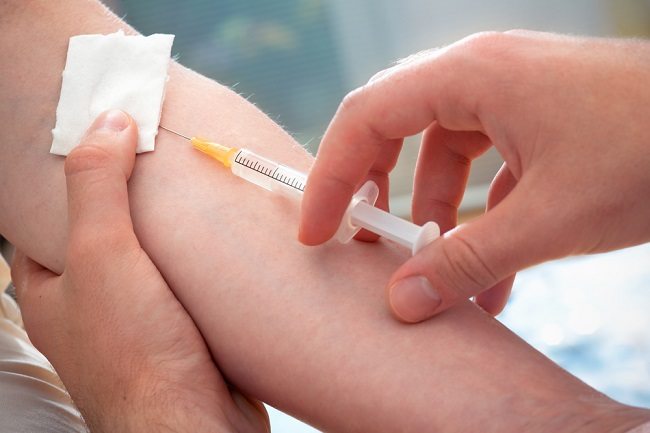Angelman syndrome is a genetic disorder that affects the nervous system. This condition will cause developmental disorders, including movement, balance, and speech. Angelman syndrome is a rare condition. This condition is estimated to only appear in 1 : 12000 people.
Symptoms of this condition are quite diverse and can be different for each sufferer. However, delays in reaching the developmental stage that should have been reached at a certain age is a common symptom in children with Angelman syndrome.

Causes of Angelman Syndrome
Angelman syndrome is a genetic disorder that can sometimes be passed down by the father or mother. This condition occurs when the UBE3A gene is not formed, is formed but is not perfect, is damaged, or does not function properly.
The UBE3A gene is on chromosome 15. Normally, a child will inherit this pair of genes from both the father and the mother. This active gene pair plays many roles in the body, including in some parts of the brain. When there is a disturbance or abnormality in this gene, developmental disorders will begin to appear when the child is 6-12 months old.
The exact cause of this gene disorder or mutation is not known. However, having a father, mother, or family member who suffers from Angelman syndrome increases the risk of developing the same condition in children.
Symptoms of Angelman Syndrome
Symptoms of Angelman syndrome cannot be seen when the baby is born. Symptoms are usually only seen when children experience developmental delays at the age of 6-12 months. For example, a child who should have been able to sit up by himself without being helped, turns out to be unable to do it or a child who should have started to chatter turns out not to be able to do it.
Other symptoms will usually become more obvious as the child approaches 2 years of age. These symptoms can vary and are not necessarily the same in every child. However, some of the common symptoms that may appear are:
- Microcephaly or smaller head size
- Seizures
- Ataxia or balance and coordination disorders
- Speech disorders, including being unable to speak
- Arms easily shake or move involuntarily
- Likes to stick out tongue
- Legs are stiffer than usual
- Crossed eyes or strabismus
- Skin looks pale
- Lighter colored hair and eyes
- Scoliosis
- Eating disorders, including difficulty chewing and swallowing food
Children with Angelman syndrome also have a cheerful attitude, are easy and often smile or laugh, are hyperactive, and are easily distracted. Some children may experience sleep disturbances. The attitude of children who tend to be more cheerful will decrease with age.
When to go to the doctor
Take your child to be seen by a doctor if he or she experiences any of the above mentioned symptoms of Angelman syndrome, especially when the child has developmental delays. A doctor's examination needs to be done to find out the cause and so that the child gets treatment early.
If your child has been diagnosed with Angelman syndrome, take control according to the schedule given by the doctor. Routine control is needed so that the child's condition is monitored.
Angelman Syndrome Diagnosis
To diagnose Angelman syndrome, the doctor will ask and answer questions about the complaints experienced by the child, the child's medical history, and family medical history, to the parents. After that, the doctor will conduct a thorough examination, including examinations to assess the growth and development of the child.
To confirm the diagnosis, the doctor will perform genetic tests to identify abnormalities in the chromosomes. Genetic tests that can be done include:
- Parental DNA test (DNA methylation) to see abnormal genes
- Test fluorescence in situ hybridization (FISH) to check for missing chromosome 15
- UBE3A . gene mutation analysis test
Angelman Syndrome Treatment
The type of treatment for Angelman syndrome is selected based on the patient's condition and symptoms. This treatment aims to relieve symptoms and developmental disorders experienced by sufferers.
Drugs
One method of treatment that can be done is the administration of drugs. Medication will be given according to the symptoms that arise. For people with Angelman syndrome who have seizures, doctors can give anti-seizure drugs, such as valproic acid and clonazepam.
Therapy
In addition to giving drugs, doctors will perform therapy so that patients can adapt and maximize their abilities. Some types of therapy that can be done are:
- Communication therapy, to develop nonverbal and sign language skills in patients with speech and communication disorders
- Behavioral therapy, to help deal with behavioral disorders, such as hyperactivity, difficulty focusing, and being easily distracted
- Physiotherapy, to help improve posture, balance, and walking ability, and to prevent contractures (stiff condition)
- Activity therapy, to help sufferers do certain activities, such as swimming, riding, or playing music
AIDS
If a person with Angelman syndrome has scoliosis, the doctor can provide aids in the form of a brace or perform spinal surgery. Installation of a support device can be done on the lower leg or ankle so that the patient can stand and walk on his own.
Most people with Angelman syndrome have developmental delays, speech and communication disorders, and movement disorders. However, if a thorough treatment is carried out, people with Angelman syndrome can still live a normal life.
Angelman Syndrome Complications
If not treated immediately, Angelman syndrome can cause complications such as:
- Eating disorders
- Sleep disturbance
- Hyperactive
- Scoliosis
- Obesity
Angelman Syndrome Prevention
Angelman syndrome is a genetic disorder that is difficult to prevent. If your child has symptoms of Angelman syndrome, check with a doctor to get treatment early, so that the child can adapt to the disorder he is experiencing.
In addition, for those of you who are planning a pregnancy and have a family history of Angelman syndrome, it never hurts to do a genetic test or screening to find out the risk of Angelman syndrome in your child in the future.









